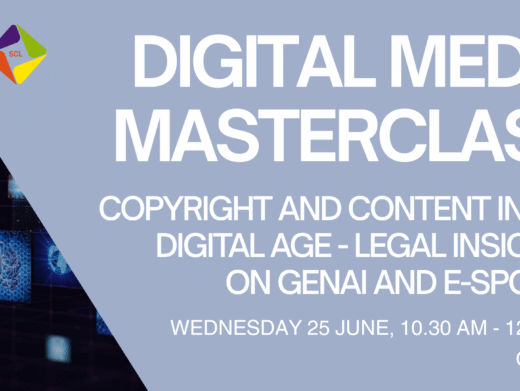We talk about online entertainment and services rather freely as more and more are available through computers, the television, PDAs and, increasingly, smart mobile phones. This article concentrates on the formation of contracts electronically without the “physical” exchange of hard copy material by post or fax. Traditionally, contracts are still concluded by means of a signed piece of paper although this may be sent by fax transmission. The Internet and World Wide Web have taken over and vastly expanded the concept of such electronic contracting which historically existed, but usually on the basis of an EDI agreement which enabled exchange of information and contracts by reference to some settled standards.
Running through the consideration of this issue is the underlying theme of the extent to which software and other media are protected by traditional intellectual property law.
It is also necessary to consider in some depth what a computer software program is in this context. Traditionally, computer software is a program written in some computer language that instructs computer hardware (a PC or a server or a PDA) to carry out a task such as word processing. Under international treaties, and in the
Software licence models
Software vendors have tested the ability of the law to keep pace with their distribution arrangements for some time. Their commercial issue has been how to incorporate licence terms in the distance selling of software. Initially, this took the form of so-called shrink-wrap licences where the licence terms were contained within the packaging of the software disk. The legal issue in different jurisdictions with this approach has been that the purchaser views the conditions only after acquiring the software. The conclusion that seems to have been reached in the
Online licensing has evolved what would appear to be a more effective method of contracting for the licensing of software in the form of the click-wrap licence. In this case, the online customer or licensee, when acquiring the software, is offered the opportunity (prior to being able to download the software) to accept the licence terms. Usually it is not possible to continue with the downloading process until having clicked on an “I accept” button. This process removes the disadvantages of the shrink-wrap licence in terms of making the customer aware of the licence terms prior to completing the purchase. It now seems to be generally recognised as an effective way of forming a contract and of passing on the licence terms to the customer.
A development of the click-wrap licence is the browse-wrap licence. Here, the customer is referred to another web site to view the terms and conditions, and does not have to go through the same process of acceptance prior to being able to download the software. Indications are that this process does not draw to the attention of the customer the legal terms and conditions with sufficient certainty to be effective. It may be different if the link has to be followed prior to being able to download the program.
Summary of cases
Although the enforceability of these various forms of licence has yet to be considered by the English courts, there is now a significant body of case law in the
ProCD v Zeidenberg (86 F. 3d 1447(7 Cir. 1996). In this
Hotmail Corporation v Van Money Pie Inc. (ND Cal., April 20, 1998). The
Specht v Netscape (NY DC,
Register.com, Inc. v Verio Inc (US Court of Appeals, Second Circuit,
Softman Products v Adobe Systems (171 F.Supp 2d 1075 (CD Cal. 2001). Adobe sold a software bundle at an aggregate price which an intermediary, Softman, unbundled and sold separately. Softman was held not to be bound by a click-wrap licence which it could not read as this was only displayed when the program was installed by an end user.
i-Systems Inc v Softwares Inc. (D Mn,
i.Lan Systems v Netscout (Civ. Act. No 00-11489-WGY 2002 US Dist. Lexis 209 (D. Mass,
Regulation of click-wrap licences
In the
“Our economy has experienced another fundamental change, with information products and services now driving increased productivity and growth. Accompanying this change is a widely diverse and rich array of methods for distributing and tailoring digital information to the modern market place. Contracts underlie both the creation and distribution of such information. However, legal rules that are not relevant to commercial practice or that are uncertain in application, inhibit contracting or raise transaction costs. UCITA was drafted in response to the fundamental economic change and need for clarity in the law.”
The EU E-commerce Directive, Article 9 provides that any kind of agreement, including software licences, can be validly concluded electronically, although Article 11 states that contracts can be concluded electronically only after the vendor has acknowledged receipt of the buyer’s order.
In the
Reseller arrangements
The position of resellers in online transactions seems to be less certain. There are a number of complexities involved with the distribution of software licences by intermediaries acting as distributors or agents. The issue is often the way in which the electronic licensing terms are transmitted to the end user. The licence may well be entered into directly between the software house and the end user, with whom there is often very little relationship other than that created by the click-wrap licence agreement and some kind of registration process. It is here that the issues about whether software is a sale of goods come to the fore. If it is a sale of goods, the EU first sale doctrine applies. The purchaser of a copy of a copyright protected work is entitled to sell or dispose of that copy without the copyright owner’s consent. A book or a video would be an obvious example. Thus any limitations contained in the licence agreement would not be enforceable.
Practical guidelines
· Ensure lawyers are involved in the design of legal process.
· Clear language is required for the software licence and for the formation process.
· The licensee or customer must be able to take a copy of the licence terms.
· The presentation on the Web site or the format of the licence arrangements is crucial.
· Care must be taken with the organisation of the online process.
· The end user’s ability to view the licence agreement prior to accepting must be clear – they do not necessarily have to have read the licence terms but they must be enabled to view them.
· The end user should also be notified that the software being downloaded is subject to an end user licence agreement.
Online service
Different models are now again being considered for software distribution. This builds upon the application service provider (ASP) model which, whilst in some ways short-lived, has generated a different way of thinking about how software can be used. Instead of the traditional licence arrangements, software is effectively available on tap as a service from a centralised source. The user, who is in this sense not a licensee or an acquirer of a product, simply pays for the ability to use the software as a service. This service makes use of networks and the availability of broadband technology to deliver streams of information. It is still a concept that is not understood or properly thought through and vendors still seek to impose licence conditions. In reality, the arrangements are more like a service agreement and require a proper definition of that service and effective service levels that the customer can rely on and enforce.
Software police
One of the consequences of the establishment of online contractual relationships, particularly where services are being provided to customers (such as online upgrades or indeed on-tap software) is that it often gives the software licensor the ability to access the software remotely and utilise functions which deactivate the software. This prevents the software from working after a period of time if, say, any licence fee has not paid. If it is something that the licensor wishes to be able to do then it should be covered in the terms and conditions and should be clearly assented to by the user or it may be a breach of contract. Switching software off without warning can severely damage the business of the user and can lead to the licensor having some responsibility for this loss, subject to any limit of liability in the licence agreement. There is also increasing concern, particularly in the financial services sector, that access to customer systems without consent could potentially lead to a breach of privacy and data protection legislation.
Regulation of online services
The Copyright, Designs and Patents Act 1988 protects software as a literary work, giving the owner the right to make copies and to distribute the software. Section 17 provides that copying includes storing the work in any medium by electronic means. Copying also includes the making of copies which are transient or incidental to some other use of the work.
The European Directive on Copyright in the Information Society ratifies a number of obligations arising from the WIPO Copyright Treaty designed to clarify copyright law as to the nature of Internet distribution. This has been implemented in the
Other entertainment works
Music has in many ways been at the forefront of online distribution of entertainment works with the legal challenges to companies such as Napster gradually being replaced by commercial models such as Apple i-tunes which enable online access to music.
The big issue in the music industry, definitely more so than in the software industry (although it is of course still relevant there), has been the issue of pirated copies of music and the success of organised services providing free music downloads or peer-to-peer file sharing. The apparent acceptance of the younger generation of a right of access to free music, supported in some cases by the musicians themselves, has promoted this. This is leading to industry restructuring amongst the record companies as their revenue streams change.
In some ways it is a different model in the sense of being one product delivered to many consumers, although you could argue that games software is the same. What is different is the use of collecting societies as a means of organising the collection of royalties for artists. The European Commission investigated online music licensing in 2004 and, in a move to promote competition in the distribution of music over the Internet, has warned a number of bodies which collect royalties on behalf of composers that their licensing agreements may breach EU competition law. The issue is about limited or no choice as to the collecting society which can be used in any given territory.
The copyright law position is also complicated in respect of the online exploitation of music because there are three separate categories of works: musical works in associated lyrics; sound recordings; and the performances, all of which need to be dealt with. There are also issues, for example, as to whether a 30-second clip of each track constitutes making a copy.
Software v music downloads
If you contrast software and music, both can be distributed as digital products, although with software the debate has been more around whether it is goods or a service and how you form the contract in the consumer and business context. With music and other entertainment the issues primarily revolve around the protection and exploitation of intellectual property through the distribution channels. One difference is that software is also used in a business-to-business context. Music in some ways has the same problems related to protection of intellectual property and effective contracting but the emphasis, in what is essentially only a consumer industry, has been different. Software is also different in that it provides an ongoing revenue stream through support and upgrades whereas music is a one-off consumer product. This has resulted in completely different pricing models, although you could argue that both are moving towards an online service rather than the sale of a product or the licensing of a copyright work.
Online films
These are already available through Sky Box Office and Sky Plus and various video on demand services which have been promoted over the years. Increasingly films and TV programmes are produced in a digital format such that they can be downloaded or streamed. As the industry moves away from celluloid copies of films, we are also going to see online film distribution from the studios to the cinema chains. There are potentially similar issues to music in terms of the distribution of DVDs and the piracy issues. The availability of films through different channels will affect the commercial distribution arrangements and effective online licensing and sub-licensing will become a key aspect of the industry.
Convergence and licensing
We are now seeing true mobile working with PDAs and Blackberries. The expansion of broadband in the
Overall conclusion
Online licensing is here to stay and works. The law has pretty much adapted to it and offers opportunities for greater protection of intellectual property rights. Reseller arrangements still pose legal problems for software distribution, although they seem to work in practice. Increasingly, like music, software is going to become available online as a service for which customers pay a periodic fee rather than a one-off licence fee. There is an increased risk of intrusion by suppliers into business systems. The different risks and associated liability accepted in the chain of supply will need to be reflected in the contract arrangements. Unlike the Galapagos giant turtles, contract terms will have to evolve in order to keep pace with changes in technology and commercial practices.
Clive Davies is a Partner at Olswang: clive.davies@olswang.com




